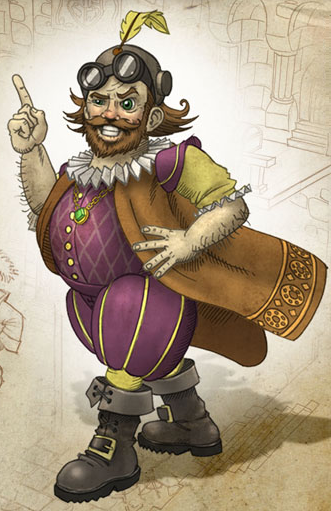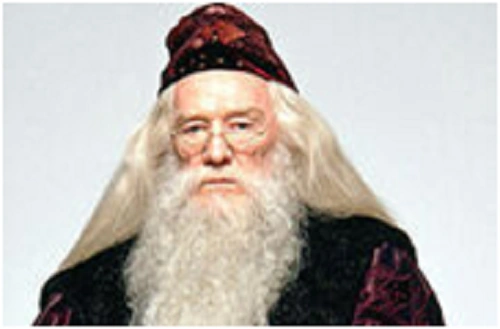The Levitation Charm[4] (Wingardium Leviosa)[1] was a charm used to make objects fly, or levitate.[1] It was taught to first-years at Hogwarts School of Witchcraft and Wizardry.[1][5] There were a number of lesser variations of the Levitation Charm, such as the Levitation Spell, the Hover Charm...

harrypotter.fandom.com
"
The Levitation Charm is one of the first spells learnt by any young witch or wizard. With the charm a witch or wizard can make things fly with the flick of a wand. The charm is an excellent test of your magical skills, wand control and above all, patience." — An excerpt from
Book of Spells[src]
The
Levitation Charm[4] (
Wingardium Leviosa)
[1] was a
charm used to make objects fly, or
levitate.
[1] It was taught to
first years at
Hogwarts School of Witchcraft and Wizardry.
[1][5] There were a number of lesser variations of the Levitation Charm, such as: the
Hover Charm, the
Rocket Charm, and the
Floating Charm, but the Levitation Charm remained the original and best.
[3]
History
"
The Levitation Charm was invented in 1544 by warlock Jarleth Hobart who mistakenly believed that he had at last succeeded in doing what wizardkind had so far failed to do, and learnt to fly." —
Miranda Goshawk,
Book of Spells[src]
Hobart's first public use of the charm, on himself
The Levitation Charm was first
developed in the
sixteenth century, and
warlock Jarleth Hobart is credited with its creation.
[3]
On
16 July, Hobart invited a large crowd of wizards, among which was the
Chief Warlock of the Wizengamot, to witness his "maiden flight" — a public demonstration of his own revolutionary charm on himself. He climbed onto the roof of his local church and, after several speeches and a rousing performance of the
national anthem he leapt and, having cast the spell, was left hovering in mid-air. At first, he seemed to have succeeded but, after having spent nearly three minutes watching him hanging in mid-air, the crowd grew impatient to see him move somewhere, and booed him.
[3]
In response to the catcalls, Hobart tried to move in midair, and started performing vigorous swimming movements, which produced no effect. Mistakenly believing that his clothes were making him heavier and impeding his movement, Hobart stripped thus making him fall ten feet onto the ground below, as it were the clothes that were holding him up in the air — they had been charmed by the Levitation Charm, not Hobart himself. He fell completely naked on the ground, breaking sixteen bones, and received a fine for "
outrageous silliness" from the Chief Warlock of the Wizengamot in 1544
.[3]
Hobart returned home, humiliated, where he realised that his spell could make objects levitate for varying lengths of time, depending on the skill of the spell-caster and on the weight of the object. He also concluded that small animals or even children could be levitated, but that they had no control whatsoever of their movement once airborne.
[3]
He thus made a second announcement, and an even larger crowd gathered to see his second demonstration of the spell (hoping for another laugh at his expense). Hobart's demonstration was, at first, by far more successful than the first one: he showed the onlookers how he could easily levitate objects ranging from small rocks to fallen trees. Hobart decided that, for a finale, he would levitate the
Chief Warlock's hat — what he managed to levitate, however, was the Chief's wig, exposing his bald head to the gathered crowd. The Chief was not amused, and was determined to
duel Hobart, but the Warlock levitated the Chief's robes over his head, and ran for it.
[3]
This is also the first spell students learn to cast during their
Charms lessons in the
first year.
[1][5] They revise it in the
second[6] and their
third year.
[7] The theoretical Charms
O.W.L. exam includes a question on the Levitation Charm.
[8] Hermione Granger was the first student in her class to levitate a feather much to
Ronald Weasley's annoyance.
[1]
Effects
"
He eventually realised that he had invented a spell that would lift objects into the air and could cause them to hover for varying lengths of time, depending on their weight, and the skill of the spellcaster." — An excerpt from the entry in
Book of Spells[src]
The movement shown on a blackboard
Swish and Flick
The Levitation Charm appears to be an improvement on both the
Levitation Spell and
Locomotion Charm and/or the
Hover Charm, being able to lift objects high in to the air but also allowing one to magically move them through it as well. It also conveniently defies gravity by lifting objects heavier than a normal person would otherwise be able to carry, as seen when Ron used this on a troll's club, something a first year Hogwarts student would otherwise never be able to do without magic.
[1]
"
This charm ought not to be seen as a joke spell. It can be most useful in duels and can lift physical obstacles and can even Levitate small creatures (though this is likely to confuse any poor animal and is certainly not to be encouraged)." — An excerpt from
Book of Spells.
[src]
Despite its strengths, however, the Levitation Charm has one fatal flaw: it does not work on
human beings. Though a human can be levitated using this charm, it is actually their clothing that is being affected. The charm is apparently not strong enough to allow a human to do anything more that float a few feet off the air using this method, and therefore does not allow the
true flight afforded to most other objects.
[3]
Almost anything can be lifted with this spell, although the object levitated depends on the skill of the
caster and the weight of the object.
[3]
The effects of this charm can be reversed with the
General Counter-Spell.
[9]
Known uses
Ron Weasley: "
Wingardium Leviosa!"
Hermione Granger: "
You're saying it wrong. It's Wing-gar-dium Levi-o-sa, make the 'gar' nice and long."
Ron Weasley: "
You do it, then, if you're so clever" — Hermione being condescending toward Ron
[src]
Caster(s) | Date | Notes |
|---|
| Jarleth Hobart | 1544 | The first use of the spell was that of Hobart using it on himself as he leapt from the roof of a local church, remaining suspended in mid-air for a brief period of time before the crowd of wizards gathered to watch his new spell.[3] |
| Delphini | 31 October, 1981 (alternate timeline) | Delphini used this spell to attack Harry Potter with a church pew, but failed to do so as Harry rolled over to avoid being crushed under it.[10] |
| Filius Flitwick | 1986–1987 school year | Used this spell to cause Rita Skeeter to levitate during a Charms lesson, in order for Jacob's sibling to practically demonstrate the General Counter-Spell.[9] |
| Draco Malfoy | June, 1996 | Used it during his Theory of Charms exam.[8] |
| 31 October, 1981 (alternate timeline) | Draco used this spell to elevate Delphini in the air and out of sight.[10] | |
| Jacob's sibling | 1987–1988 school year | Used this spell to levitate themselves into the air in the Forbidden Forest, in order to see the Centaurs up high.[11] |
| Hermione Granger | 31 October, 1991 | Hermione was the first student in her charms class to master the spell in the first lesson; whilst doing so she attempted to teach Ron Weasley how to correctly cast the spell, much to his annoyance.[1] |
| Ron Weasley | 31 October, 1991 | Ron used this spell to defeat a Mountain Troll which Professor Quirrell had let into the school.[1] |
| 2 May, 1998 | He also used the spell again seven years later to levitate a twig in order to press the knot on the tree that was trying to beat him up which would freeze the aforementioned tree.[12] | |
| Bill Weasley | August, 1994 | Used this spell to levitate the table to fight a table levitated by his brother Charlie.[13] |
| Charlie Weasley | Used this spell to levitate the table to fight a table levitated by his brother Bill.[13] | |
| Rita Skeeter | 13 November, 1994 | Used it non-verbally to levitate the candles in the Broom cupboard.[14] |
| Lee Jordan | 1996 | Lee used this spell twice to levitate Nifflers into Dolores Umbridge's office to annoy her; however, eventually another of his teachers, Rubeus Hagrid got blamed for it instead.[8] |
| Harry Potter | June, 1996 | Used it during his Theory of Charms exam.[8] |
| 18 June, 1996 | He later used it during the Battle of the Department of Mysteries in the Brain Room in an attempt to remove some brains from himself, which managed to attack him.[15] | |
| 27 July, 1997 | Harry used the spell during the Battle of the Seven Potters to levitate the side-car he was sitting in after it was separated from the motorbike it was connected too.[16] | |
| Severus Snape (possibly) | October 1996 | Snape may have used this spell so that he could examine a cursed necklace without touching it, though that might have been a Hover Charm.[17] |
| Minerva McGonagall | 1 May, 1998 | McGonagall used this spell during the Ousting of Severus Snape, causing a torch to fly off of its bracket and spin around, creating a wild movement of flames similar to that of a lasso in an attempt to thwart the Death Eater.[18] |


